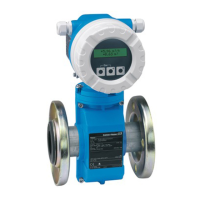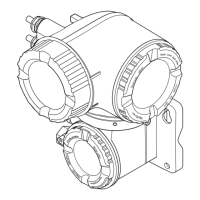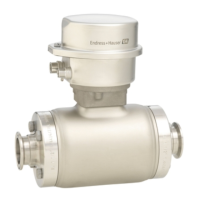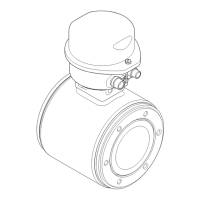Proline Promag 300 HART Proof testing
Endress+Hauser 31
the safety function. The individual proof test coverages (PTC) that can be used for calculation
are specified for the test sequences described below.
Flexible testing of field devices
NAMUR Worksheet NA106 "Flexible proof testing of field devices in safety instrumented
systems" explains how to optimize testing activities on existing installations. Heartbeat
Verification enables the documentation of the current device diagnostic or device status
as proof of testing. This supports the documentation of proof tests according to IEC
61511-1, Section 16.3.3, "Documentation of proof tests and inspections". The Heartbeat
Technology developed by Endress+Hauser can be used to implement the "Flexible testing"
test strategy of field devices under NA106.
Heartbeat Verification is not a substitute for a proof test. Test sequences with Heartbeat
Verification can contribute to the detection of systematic errors within the context of
proof testing. In this case, Heartbeat Verification is one step in the proof test sequence.
Device verification (Heartbeat Verification) is based on device-specific test sequences
that are performed automatically. Heartbeat Verification also enables the detection of
systematic errors in the sensor system (e.g. formation of buildup in the sensor).
Heartbeat Verification is based on device-specific test sequences that are performed
automatically. Formation of buildup in the sensor. Heartbeat Technology is a
methodological design concept based on IEC 61508 consisting of the Heartbeat
Diagnostic, Verification and Monitoring modules
For more information on Heartbeat Technology, see the associated documentation in the
Operating Instructions.
Proof-testing of the device can be performed as follows:
• Test sequence A: Testing with a secondary standard 1 (volume flow) and current output 1 →
PTC = 99 %
• Test sequence C: Testing with a secondary standard 1 (volume flow) → PTC = 98 %
• Test sequence D: Device restart, testing of output 1, Heartbeat Verification →
PTC = 36 % + systematic errors
• Test sequence E: Device restart, Heartbeat Verification → PTC = 19 % + systematic errors
• Test sequence F: Heartbeat Verification → PTC = 0 % + systematic errors
Note the following for the test sequences:
• The individual proof test coverages (PTC) that can be used for calculation are specified in
the Declaration of Conformity.
• Test sequence C is not permitted for a commissioning test.
• The transmitter can be tested without a sensor using an appropriate sensor simulator
(resistance decade, reference voltage source, etc.).
• The accuracy of the measuring device used must meet the transmitter specifications.
• A three-point calibration must be performed when customized linearization (e.g. with CvD
coefficients) is used. The upper sensor limit and the lower sensor limit must also be
checked.
Proof testing and optimization of subsystems
NAMUR Worksheet NA106 "Flexible proof testing of field devices in safety instrumented
systems" explains how to optimize testing activities in safety instrumented systems with

